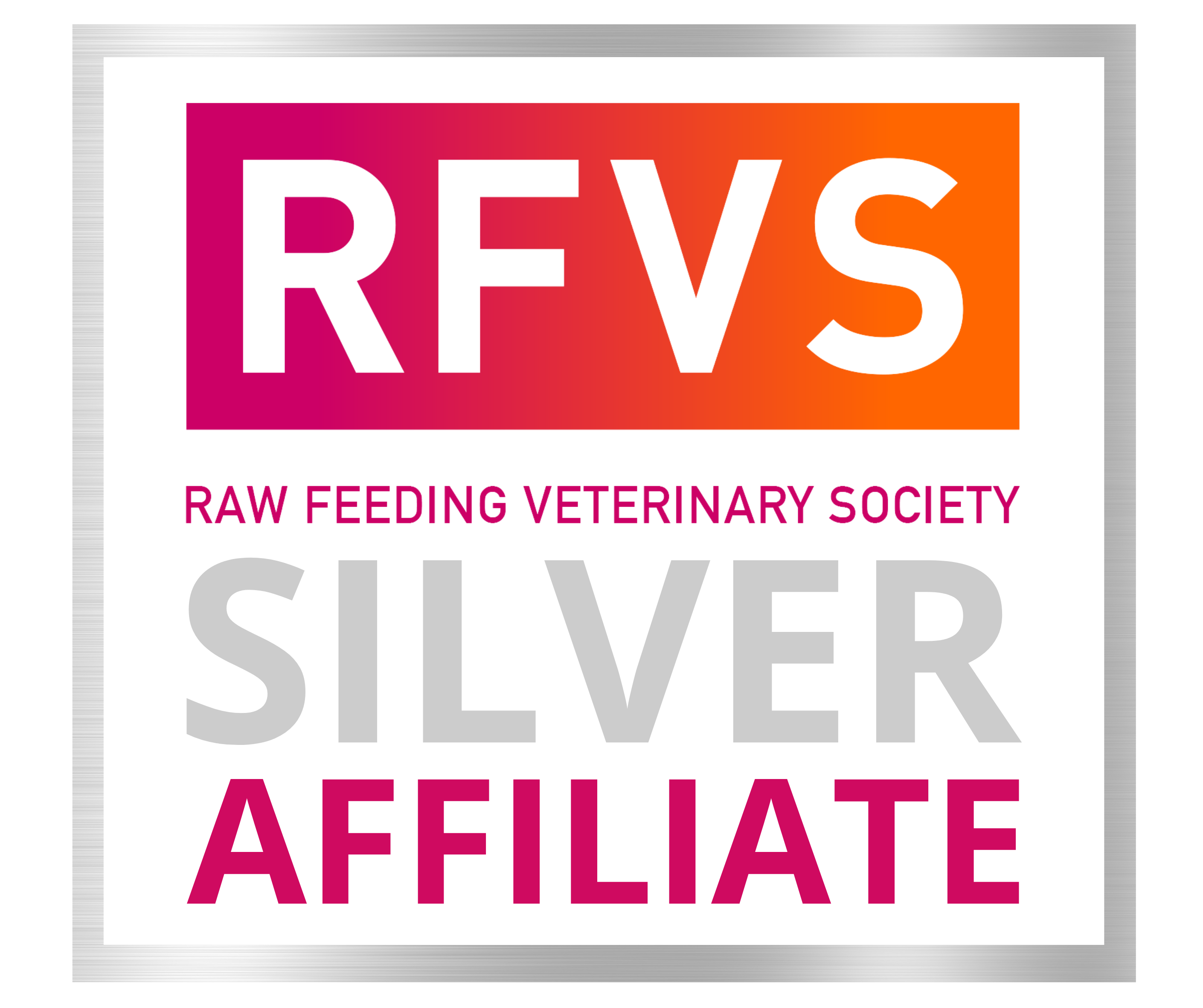Raw Feeding Your Cat

STOP ALL GRAINS AND STARCHES
Cats and dogs are carnivores. Their digestive tracts are uniquely geared to meat–based proteins. They’re not meant to eat diets that include starches and grains. All brands of cat biscuits contain corn, soy, wheat or rice and most tinned, wet food contain gelling agents and grains. Also stop bread, pasta, rice, potatoes, kumara, pumpkin etc. This is very important!
FEED YOUR CARNIVORE
A balanced raw diet includes meat, bones, organs, and green tripe from a variety of sources, in approximate prey proportions. And, as a rule of thumb we recommend feeding from at least three different prey species over a week. This ensures a good variety of nutrients in your cat’s diet.
- Minces: Our minces contain a mixture of muscle meat, bone, and organs. Feed the minces alongside the products listed below to make it a well-balanced raw diet.
- Meaty Bones: Chicken necks, turkey necks, rabbit legs, rabbit shoulders, hare shoulders, possum pieces. See our Bone Feeding Guide for more information.
- Green Tripe: You can include a small amount of minced product that contains tripe in your cat’s diet. Some cats enjoy it, but some don’t like the taste or smell of it. Tripe treats are a great alternative.
- Organ Meat: Organs should be included in your cat's diet in approximate prey proportions. Most cats love organ meats.
- Fillets and Meat Cubes: Fillets and meaty cubes are great for cats to chew on. If your cat is struggling to pass their stools, fillets or meat cubes are a good way to dilute their bone intake. Feed as part of a balanced diet - no more than ⅓ of the diet.
- Fish: Cats can have fish up to three times a week. Either whole fish or a tin of sardines (in spring water).
Never feed any cooked bones to your cat.


HOW OFTEN AND HOW MUCH
Cats over 6 months can be fed twice a day. Check out Feeding Kittens & Puppies for younger cats.
For a cat with a healthy weight, aim to feed them approximately 3% of their body weight each day. Refer to the suggested feeding guide on your feeding plan for detailed info.
WHAT ELSE TO EXPECT WHEN CHANGING TO RAW
- Cats may drink less - this is because a raw diet has a high water content.
- Bowel movements will be small, firm and less smelly.
- If your cat is being fussy or leaving food in the bowl, you may be over feeding them. Take the food away and offer less for the next meal.
- If your cat is losing weight or seems very hungry, then you should increase their daily intake a little at a time until you are happy with their weight and demeanour.
- If your cat is gaining weight then you can feed a little less until their weight stabilises.
- Use your cat’s body condition as a guideline for how much to feed.
- Cats can be lazy so if they walk away from food that needs to be chewed (like a chicken neck), try putting them in a quiet room for their meal.


